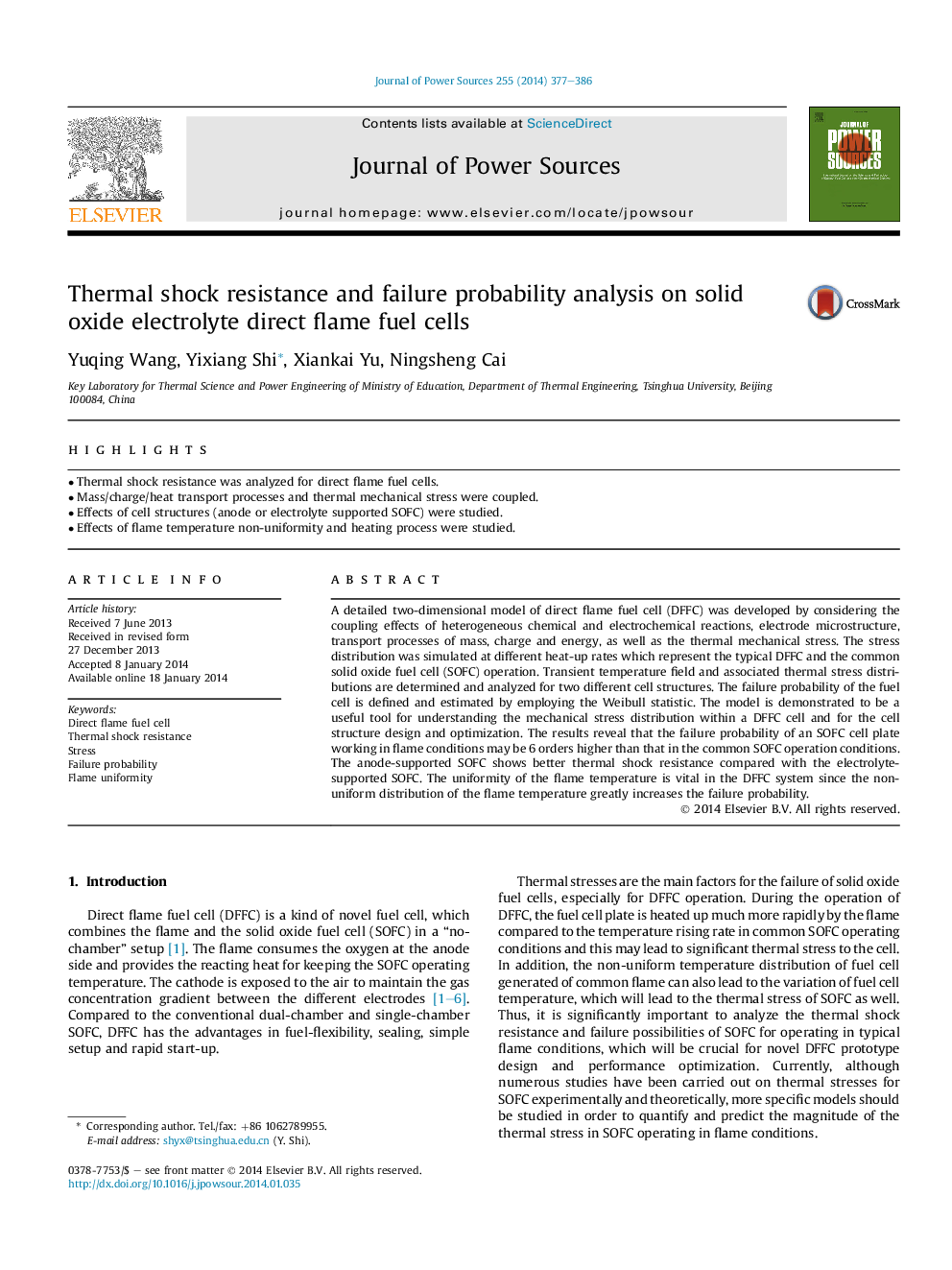| Article ID | Journal | Published Year | Pages | File Type |
|---|---|---|---|---|
| 1284199 | Journal of Power Sources | 2014 | 10 Pages |
Abstract
A detailed two-dimensional model of direct flame fuel cell (DFFC) was developed by considering the coupling effects of heterogeneous chemical and electrochemical reactions, electrode microstructure, transport processes of mass, charge and energy, as well as the thermal mechanical stress. The stress distribution was simulated at different heat-up rates which represent the typical DFFC and the common solid oxide fuel cell (SOFC) operation. Transient temperature field and associated thermal stress distributions are determined and analyzed for two different cell structures. The failure probability of the fuel cell is defined and estimated by employing the Weibull statistic. The model is demonstrated to be a useful tool for understanding the mechanical stress distribution within a DFFC cell and for the cell structure design and optimization. The results reveal that the failure probability of an SOFC cell plate working in flame conditions may be 6 orders higher than that in the common SOFC operation conditions. The anode-supported SOFC shows better thermal shock resistance compared with the electrolyte-supported SOFC. The uniformity of the flame temperature is vital in the DFFC system since the non-uniform distribution of the flame temperature greatly increases the failure probability.
Related Topics
Physical Sciences and Engineering
Chemistry
Electrochemistry
Authors
Yuqing Wang, Yixiang Shi, Xiankai Yu, Ningsheng Cai,
